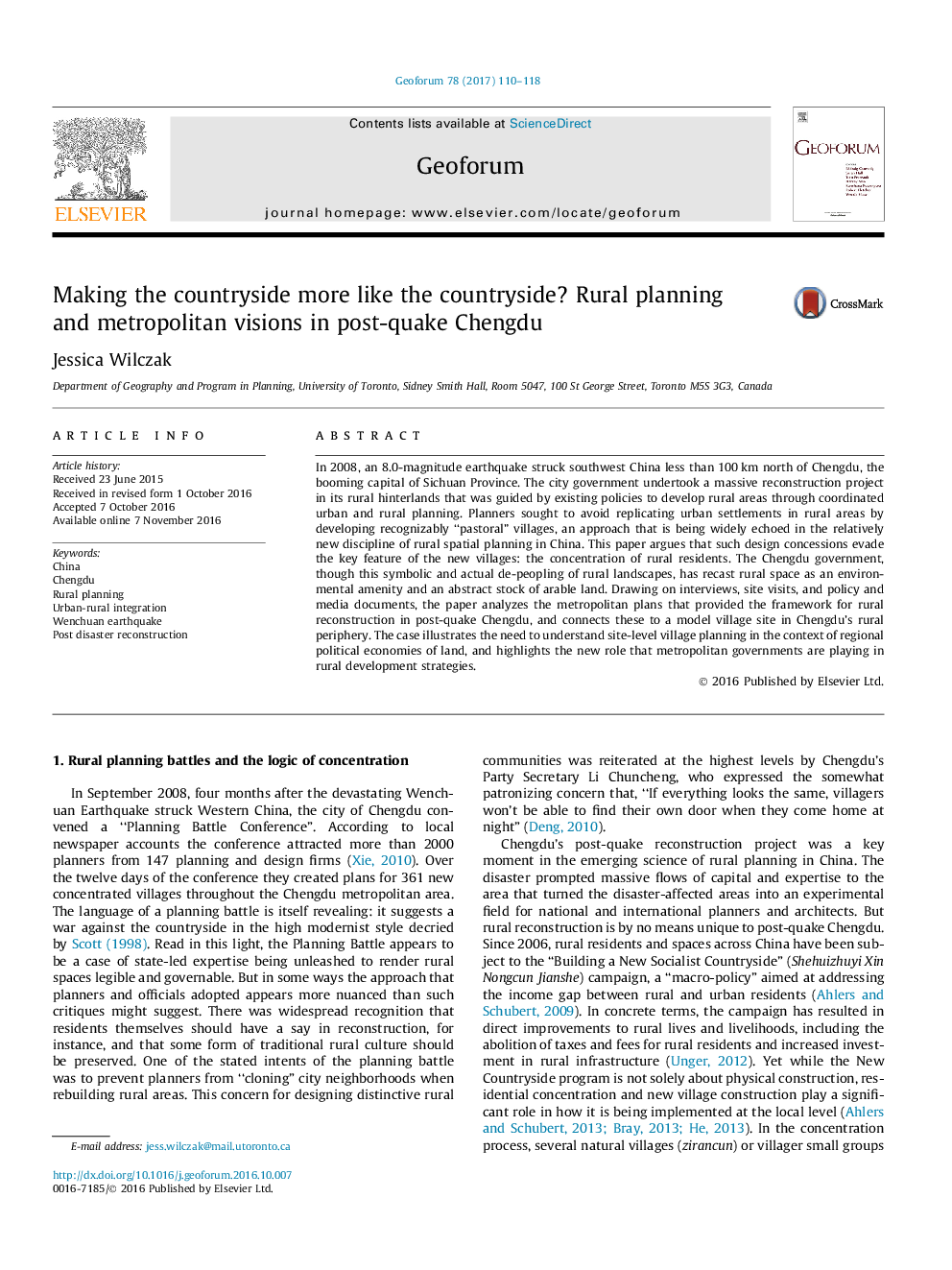| Article ID | Journal | Published Year | Pages | File Type |
|---|---|---|---|---|
| 5073495 | Geoforum | 2017 | 9 Pages |
Abstract
In 2008, an 8.0-magnitude earthquake struck southwest China less than 100Â km north of Chengdu, the booming capital of Sichuan Province. The city government undertook a massive reconstruction project in its rural hinterlands that was guided by existing policies to develop rural areas through coordinated urban and rural planning. Planners sought to avoid replicating urban settlements in rural areas by developing recognizably “pastoral” villages, an approach that is being widely echoed in the relatively new discipline of rural spatial planning in China. This paper argues that such design concessions evade the key feature of the new villages: the concentration of rural residents. The Chengdu government, though this symbolic and actual de-peopling of rural landscapes, has recast rural space as an environmental amenity and an abstract stock of arable land. Drawing on interviews, site visits, and policy and media documents, the paper analyzes the metropolitan plans that provided the framework for rural reconstruction in post-quake Chengdu, and connects these to a model village site in Chengdu's rural periphery. The case illustrates the need to understand site-level village planning in the context of regional political economies of land, and highlights the new role that metropolitan governments are playing in rural development strategies.
Related Topics
Social Sciences and Humanities
Economics, Econometrics and Finance
Economics and Econometrics
Authors
Jessica Wilczak,
